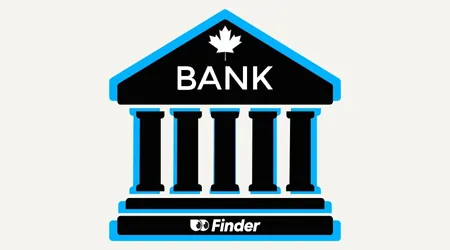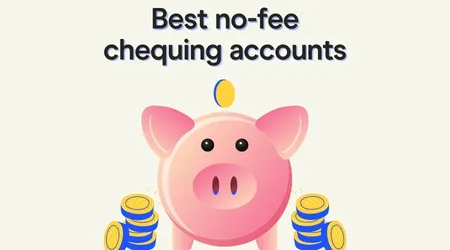A vacation, a new car, a house deposit or just extra cash for a rainy day—no matter what you’re saving for, a high interest savings account will help you get there.
Unlike a chequing account, a high interest savings account pays interest on every dollar you deposit, so your bank balance will grow without you having to do a thing.
In this guide we’ll look at how high interest savings accounts work, where to get the best rates and how to find the account that’s right for you.
What is a high interest savings account?
A high interest savings account is exactly that—an account that pays a much higher interest rate on your balance than a regular savings account or a chequing account.
That’s important because, the higher the interest rate you get, the faster your balance will grow.
Also known as a high yield savings account, a high interest savings account generally comes with no monthly fees. These accounts are commonly offered by online-only banks and provide easy access to your money via online and mobile banking.
Compare high interest savings accounts
Finder Score for savings accounts
To make comparing even easier we came up with the Finder Score. Interest rates, account fees and features across 50+ savings accounts and 25+ lenders are all weighted and scaled to produce a score out of 10. The higher the score the better the account - simple.
What you should know about high interest savings accounts
With some high interest savings accounts, the high interest rate you see advertised applies to every dollar you deposit—no strings attached. But that’s not always the case.
Some accounts come with terms and conditions you need to satisfy to get that juicy advertised rate. Examples include:
- Minimum deposit requirements. These accounts require you to deposit a certain amount each month to earn “bonus” interest. If you don’t deposit enough, a much lower “standard” interest rate applies.
- Transaction requirements. Some accounts require you to perform specific transactions to earn the highest rate, such as getting your pay directly deposited into your account.
- Promo rates. Some accounts come with a high promotional interest rate that only applies for a short introductory period like four or five months. Once the period ends, the rate reverts to a much lower standard level.
- Withdrawal notice requirements. You may need to give the bank advance notice before making a withdrawal from your account.
- Tiered interest. The interest rate you get is sometimes based on a tiered system depending on the size of your account balance. The larger your balance, the higher your interest rate.
Before you apply to open a high interest savings account, check the fine print to find out if you need to jump through any hoops to get the maximum rate.
Big Banks vs. digital banks: Where to find the best high interest savings account rates
For many Canadians, a Big Five Bank is all they know. If you’re the type of person who likes to “pick and stick” when managing your finances, you might have all your accounts, credit cards and loans with a single Big Five Bank—maybe even the same bank you opened your first account with as a child.
But if you’re looking for the best interest rates, you’ll generally get much better saving power with a digital bank. These challenger banks are completely online with no physical branches and can offer significantly better rates compared to major banks.
To give you an idea how much better, you can get an interest rate of:
- 2.85% with an EQ Bank 10-Day Notice Savings Account or 3% with a 30-Day Notice Savings Account
- 2.5% with KOHO Essential Plan
- 1.75%–2.75% with a Wealthsimple Chequing Account
- 2.5% with a Neo Cash Account
- 3.2% with a Laurentian Bank High Interest Savings Account
- 3.1% with a PC Financial PC Money Account
Savings accounts from traditional banks: What’s in a name?
Just because an account is called a “High Interest Savings Account,” it doesn’t necessarily mean that it actually offers a high interest rate.
Traditional banks are pretty notorious for advertising high interest accounts that actually come with much lower rates than you can find elsewhere.
Compared to the digital bank high interest savings account rates above, the rates offered with some Big Five bank accounts that sound like high interest savings accounts aren’t really high at all. Examples include:
- 0.01% with the BMO Premium Rate Savings Account
- 0.5% with the TD Growth Savings Account
- 0.01% with the Scotiabank Money Master Savings Account
That’s why it’s important to look past the account’s name and check how much interest you’ll earn on every dollar deposited.
How can a high interest savings account help me reach my savings goals?
A high interest savings account can help you build a bigger bank balance in three easy steps.
Step 1: Make your first deposit
Start by making the first deposit to your account. Many high interest savings accounts have no minimum balance requirements, so you can start saving even if you only have $5 to spare.
Step 2: Set up a regular deposit
Whenever you have some extra cash left over at the end of each pay cycle, transfer it to your high interest savings account.
To really give your savings a boost, set up recurring transfers from your chequing account to your savings account. So, if Monday is payday, you might want to set up a recurring transfer every Tuesday to send $100 of your income to your savings account. You might be surprised at just how quickly your balance increases.
Step 3: Earn interest on your interest
It’s not just deposits that will help your balance grow—now it’s time for your account’s high interest rate to do its thing. Interest is usually calculated on your balance daily and paid out monthly. Savings accounts pay compound interest, allowing you to “earn interest on your interest” and grow your balance faster.
Regular savings account vs. high interest savings account
Just how much of a savings boost can you get with a high interest savings account? Let’s look at a direct comparison between a regular savings account and a high interest savings account.
Mia has $12,000 to spare in her chequing account and wants to save a deposit for a house. She also plans to directly deposit $175 from her income into her savings account each week to help build her balance faster.
Mia’s Big Five Bank offers a regular savings account that pays 1.55% interest, but Mia decides to find out how much more she could save with a 4% high interest savings account offered by a digital bank.
As you can see in the table below, a high interest savings account will help Mia earn $4,685 more interest than a regular savings account over five years. That’s why shopping around for the highest available rate can make a big difference.
| Regular savings account | High interest savings account | |
|---|---|---|
Interest rate | 1.55% | 4% |
Initial deposit | $12,000 | $12,000 |
Weekly deposit | $175 | $175 |
Interest earned after 5 years | $2,744 | $7,429 |
Total account balance after 5 years | $60,244 | $64,929 |
How taxes work on high interest savings accounts
You won’t need to pay tax on any deposits made into a high interest savings account, as these are made using income you’ve already paid tax on. But the interest you earn on a high interest savings account balance is taxable in Canada.
You’ll need to include any interest received as part of your total income on your annual tax return. The rate at which you are taxed depends on the tax bracket you fall into.
However, you can avoid paying tax on your savings account by opening a Tax-Free Savings Account (TFSA)—find out more about how these accounts work below.
You can also learn more about your tax obligations in our guide on how savings account interest income is taxed.
What is a good high interest savings account?
There are plenty of high interest savings accounts to choose from, so how do you find one that offers good value? Keep the following factors in mind when selecting a good high interest savings account.
Your savings goals
What are you saving for? Do you have a specific goal in mind, or do you just want to build up a rainy-day fund to help cover unexpected financial emergencies?
It’s also important to consider your time frame for saving. If you have long-term savings goals, a high ongoing interest rate is a must. But if you have a short-term goal of six months or less, an account with a high introductory promo rate might be a better choice.
Interest rate
The interest rate is the number-one factor to look at when choosing a savings account. The higher the interest rate, the faster your balance will grow.
Terms and conditions
If there are any specific terms and conditions you must meet to get the highest interest rate, make sure they suit your needs. For example, if you need to deposit at least $2,000 per month to qualify for bonus interest, can you realistically do that with your current income?
Fees
The best high interest savings accounts have no monthly fees. After all, the last thing you want is a regular fee chipping away at your balance. Check the fine print to see if there are any other fees for specific circumstances like exceeding your monthly withdrawal limit.
Transactions and access to funds
It’s typically easy to manage your money via online and mobile banking, and some accounts even offer debit card access.
But while some accounts allow you to deposit and withdraw money any time, others restrict the number of free transactions you can make per month. That’s why the right account for you depends on your individual needs.
For example, an account with no restrictions on monthly withdrawals will suit anyone who wants the flexibility of being able to access their money whenever they want. But if you want to avoid dipping into your savings as much as possible, an account with limited monthly transactions may be a better fit.
If you opt for a digital bank, you may also want to see if you can deposit cheques using a mobile banking app.
CDIC insurance
Look for a high interest savings account with a financial institution that is a member of the Canada Deposit Insurance Corporation (CDIC). The CDIC insures deposits of up to $100,000 per eligible category at each of its member institutions, so you’ll be covered if your bank goes under.
Alternatives to high interest savings accounts
Not sure if a high interest savings account is right for you? Consider these alternatives.
Guaranteed investment certificates (GICs)
GICs are a low-risk investment that provide a guaranteed return on the money you deposit. You invest your money for a fixed period, and in return, you earn a fixed rate of interest on your principal.
Traditional GICs are non-redeemable, which means your money is locked away for a set period and can’t be accessed until maturity. There are redeemable and cashable GICs available, but these tend to have lower interest rates.
Hybrid bank accounts
Recent years have seen the arrival of hybrid accounts that combine the competitive interest rate of a savings account with the convenient fund access of a chequing account.
This allows you to perform all your day-to-day transactions like paying bills and making purchases, but at the same time, your balance continues to earn interest.
Examples of hybrid accounts include the EQ Bank Personal Account, KOHO Earn Interest and the Wealthsimple Chequing Account.
Tax-free savings accounts (TFSAs)
A TFSA provides a tax shelter for interest and income earned from your investments. You’ll need to be at least the age of majority in your province or territory (18 or 19) and have a valid SIN to open a TFSA. Learn more about how these accounts work in the next section.
What is a high interest TFSA savings account?
A high interest TFSA is an account that pays a higher interest rate than a regular TFSA. This high rate could be ongoing, or it could be available for a limited promo period.
A high interest TFSA also offers all the tax benefits you’d expect from this type of account. You won’t need to pay tax on the interest you earn.
You can use a TFSA like a regular savings account to earn interest on the money you deposit, but you can also use a TFSA to invest in GICs, stocks, ETFs and more.
However, there’s a limit to how much you can contribute to a TFSA each year, and you’ll need to pay tax if you contribute more than this amount.
Learn more in our detailed guide to TFSAs.
Bottom line
A high interest savings account is a very useful tool to help you reach your savings goals sooner. Earning a higher rate than you can get from a regular savings account can supercharge your savings, so compare accounts to find the best rate today.
Frequently asked questions
More banking guides from our experts

Banking statistics and trends in Canada for 2025
Explore key banking statistics and figures from the Finder: Consumer Sentiment Survey January 2025.
Read more…
Best free (no-fee) chequing accounts in Canada
Compare the features of 8 of the best no-fee chequing accounts in Canada, and find out how to avoid transaction fees.
Read more…
16 best new bank account offers for August 2025
Earn cash, rewards points, bonus interest rates and more with these new bank account offers and promotions.
Read more…
Best youth bank accounts in Canada
Learn about the different types of bank accounts for your teenager and how to choose the right one.
Read more…
Best chequing accounts in Canada for 2025
Compare chequing accounts and learn about our top picks. Compare different features and see which one is right for you.
Read more…
Open a bank account online in Canada in 5 easy steps
Compare and open a bank account online in Canada in as little as 5 minutes. Learn what you need to apply and how to get started today.
Read more…More guides on Finder
-
5% to 12% interest on savings accounts: Fact or fiction?
From a 4% to a 5% interest savings account, here’s how to find the best savings rates in Canada.
-
Savings account interest rates
Compare current savings account interest rates so you can grow your savings.
-
Neo Cash Account Review
Earn a high interest rate on your savings with no minimum deposit requirements and no monthly fees with the Neo Money Account.
-
How to budget for a new home
Discover how to budget for a new home, save effectively and plan for ongoing expenses.
-
How to build and manage an emergency fund in Canada
Explore how to create an emergency fund in Canada and where to grow your savings.
-
TFSA Guide: How Tax-Free Savings Accounts Work
Maximize your savings with a TFSA, enjoying tax-free growth, flexible withdrawals and diverse investment options.
-
Guide to registered retirement savings plans (RRSPs) in Canada
Start saving for your retirement at any age by learning about registered retirement savings plans.
-
Best high-interest savings accounts in Canada for August 2025
Compare the best high-interest savings accounts in Canada to build a bigger bank balance.
-
How to save tax in Canada on interest income in a savings account
Savings account interest is taxable in Canada. Find out how taxation works and how to minimize what you owe.
-
Compare Canadian credit union savings accounts
Find out about competitive interest rates, minimal fees and other perks you can enjoy when you bank at a nonprofit institution.
